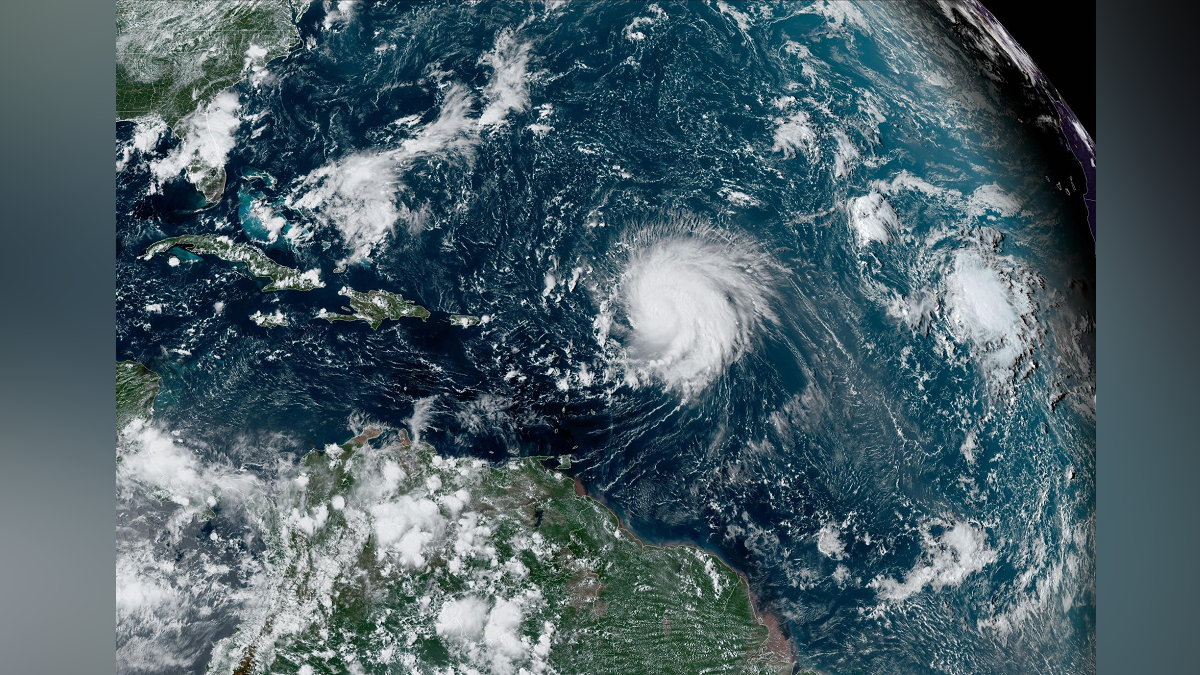Tampabay
The 2023 hurricane season is over, but provides warnings for next year
Z.Baker3 months ago
The 2023 Atlantic hurricane season began with competing forces: record-hot sea surface temperatures and a recently settled El Niño, a weather phenomenon that typically hampers storm activity. Nothing quite like it had occurred before in recorded weather history. The rare combination made the season unpredictable: While El Niño’s wind shear often stunts hurricane formation and can lead to a quieter season, forecasters knew warmer water could be powerful jet fuel for storms. Ultimately, the season, which ends today, produced 20 named storms — the fourth most since meteorologists started keeping track. Yet just one hurricane, Idalia, made landfall in the United States. It was, in a single word, odd. But this year’s unusual season is more than just fodder for weather buffs and watercooler conversations. It may also provide insight for next year’s hurricane season. Weather records show that a strong El Niño, like this year’s, is unlikely to return next season. That means it’s doubtful the weather pattern will help blunt storm activity, and instead there’s a small chance that a La Niña, which fuels hurricanes, could return. Water temperatures alsotend to peak after an El Niño, meteorologists say, which could provide more energy for storms. “If you combine those warm waters with the possibility of a La Niña coming up, it’s very worrisome,” said Bob Henson, a meteorologist and writer for Yale Climate Connections. “So there are certainly flashing lights that we need to pay real close attention to for the 2024 hurricane season.” Looking ahead It’s impossible to make solid predictions about next year’s hurricane season as this one is ending. The El Niño-Southern Oscillation (ENSO) climate pattern has three stages: La Niña, El Niño and ENSO-neutral. The cycle refers to the year-to-year changes in sea surface temperatures that affect weather across the globe, according to the National Oceanic and Atmospheric Administration . La Niña is the colder part of the cycle while El Niño is the opposite. But forecasters say climate records suggest hurricane-busting El Niño is not likely to stick around after it is expected to peak in the winter and fizzle in the spring. The Storm Prediction Center at the agency forecasts a nearly 60% chance of falling into a neutral pattern by summer, a nearly 30% chance of remaining in an El Niño and about a 15% chance of a La Niña. “There’s really high confidence for either way — neutral or La Niña conditions,” Henson said. “By the time we get to hurricane season, those odds may be even higher.” A battle of titans The 2023 hurricane season provides a lesson on how warm sea surface temperatures, which could return next year, can influence tropical weather. In June and July, surface temperatures in the southern Atlantic, where hurricanes often form, were the warmest on record since documentation began in 1950. Those higher temperatures triggered storms to form off Africa, an area where they typically can’t generate until later in the season . Ahead of the hurricane season in May, federal forecasters were calling for up to 17 named storms and a 40% chance of a near-normal hurricane season. By August, they bumped up their prediction to a 60% chance of an above-normal season, with up to 21 named storms. The increase, forecasters said, was because they believed the Atlantic s ea surface temperatures were enough to “counterbalance” the ongoing El Niño . “Typically we don’t expect a busy season with an El Niño ... but when you have such warm (sea surface temperatures), it’s hard not to get storms spawning,” said Henson. August and September are considered the peak of hurricane season. This year, more than half of the season’s named storms formed in those months, including Hurricane Idalia. Idalia slammed into the Big Bend area of Florida after a period of rapid intensification. While the storm’s center stayed about 100 miles offshore of Tampa Bay, it still managed to flood vulnerable, low-lying areas like the Shore Acres neighborhood in St. Petersburg. Early estimates say the storm caused about $5 billion in damages in the Southeast. “There was one hurricane landfall in the entire Atlantic all year, and so for just about everybody it was really quiet,” said Brian McNoldy a senior research associate at the University of Miami Rosenstiel School of Marine, Atmospheric, and Earth Science. “But (if) you lived right there in the Big Bend area of Florida, it definitely wasn’t.” No real winner Of the 20 named storms this season, seven became hurricanes. Three of those became major hurricanes. While the number of named storms was above normal, the number of hurricanes was average. “There were a lot of kind of short-lived, weak systems, and then a more average number of hurricanes and major hurricanes,” said Dan Brown, a hurricane specialist branch chief for the National Hurricane Center. Many storms turned north across the Central Atlantic. The storms that made that path likely couldn’t gain strength because of El Niño’s rising wind shear and because that area is not as friendly to storm development, Brown said. Even though many of those storms puttered out, there was still plenty of tropical activity to monitor. “For us as forecasters, it stayed very busy,” Brown said. “Once things really got rolling in August, there was not much of a break.” Why storms kept turning Typically, the Gulf of Mexico and the Caribbean Sea are a hotbed of activity. However, El Niño conditions and a weak area of high pressure in the northern Atlantic may have steered storms away from those areas. Just a few of the 20 named storms formed outside the Atlantic, including Hurricane Idalia. When that area of high pressure is strong, it helps push stormsfarther west into the Caribbean and into the Gulf of Mexico. But when it’s weaker like it was this year, storms are more likely to curl north before reaching the East Coast of the U.S. “I mean obviously the exception is Idalia ... but without that, the Caribbean and the Gulf were really dead actually, not even a hurricane,” McNoldy said. “So if we just subtract that one storm from it — no hurricanes in the Caribbean or Gulf all season. That’s odd.” Storms turned so often this year that a county in Maine, the easternmost point in the United States, was in the forecast cone more than any other county in the United States, according to Michael Lowry, a hurricane specialist and storm surge expert for WPLG Local 10 News in South Florida. “It seemed like a fairly quiet-ish season, for most people, and that’s just because most of the storms stayed out over the ocean,” McNoldy said. “But in reality, when you just look at the overall numbers it was definitely an active season.”• • • Tampa Bay Times hurricane coverage 2023 What to do if your house floods from Hurricane Idalia How to help Hurricane Idalia victims, or get assistance if you need it Hurricane floodwater can be dangerous. Here’s why you should stay out of it. Hurricane season 2023: Here’s what to know about forecast tracks. Storm surge is deadly. We built a computer model to show how. How to protect your pets — and yourself — during a hurricane. Checklists for building all kinds of storm kits Protect your data and documents using your phone Protect your home and business before the storm
Read the full article:https://www.tampabay.com/hurricane/2023/11/30/end-of-hurricane-season-in-florida-2023/
0 Comments
0









:quality(70)/cloudfront-us-east-1.images.arcpublishing.com/shawmedia/PEUDW3U6MJEA7C5YS5A2SADL7U.jpg)










